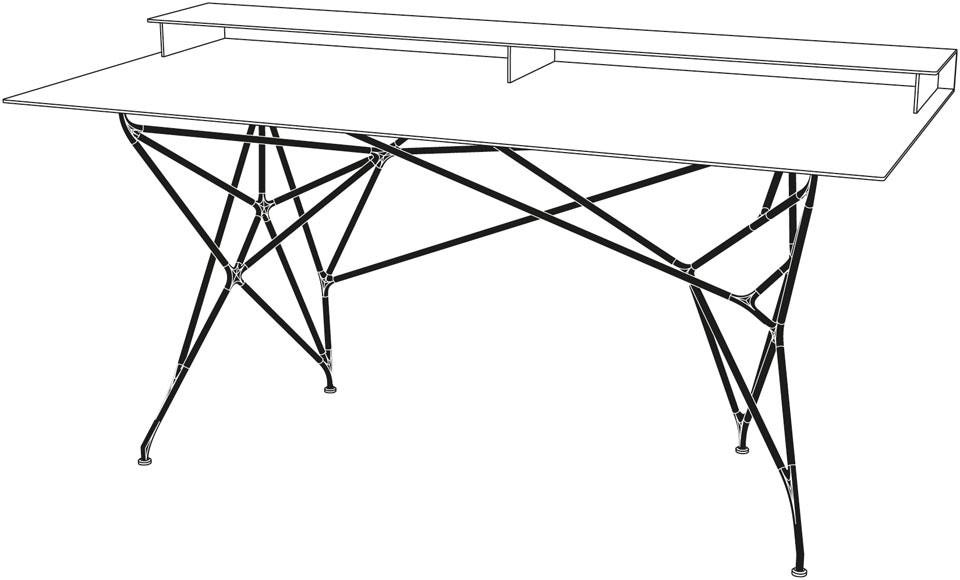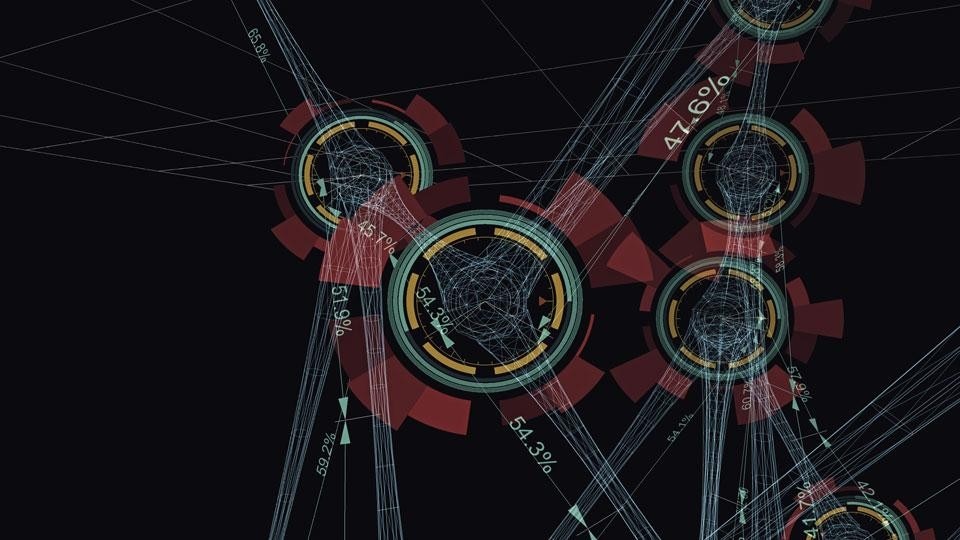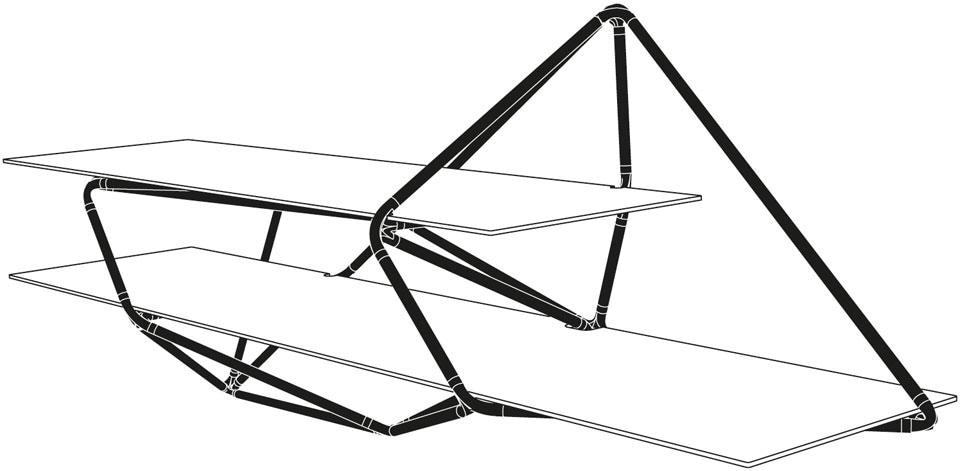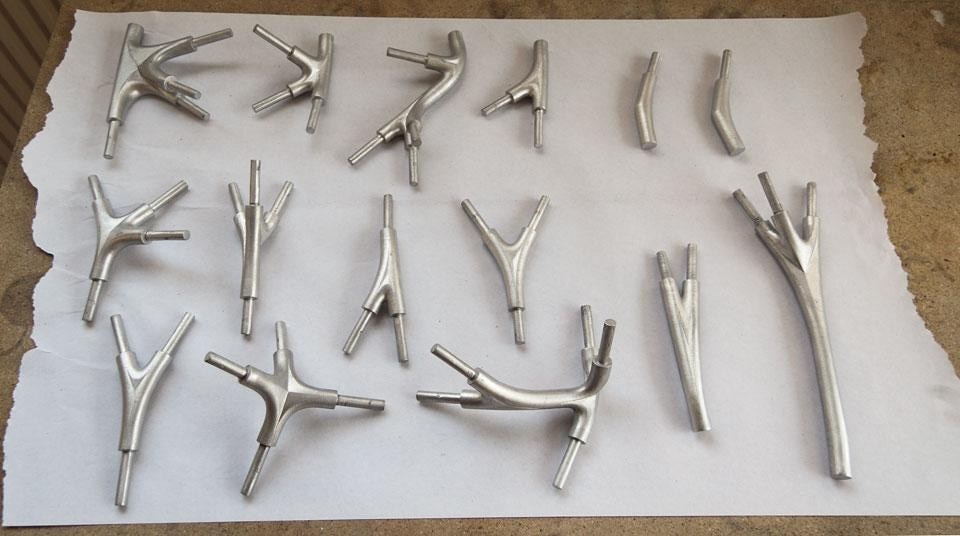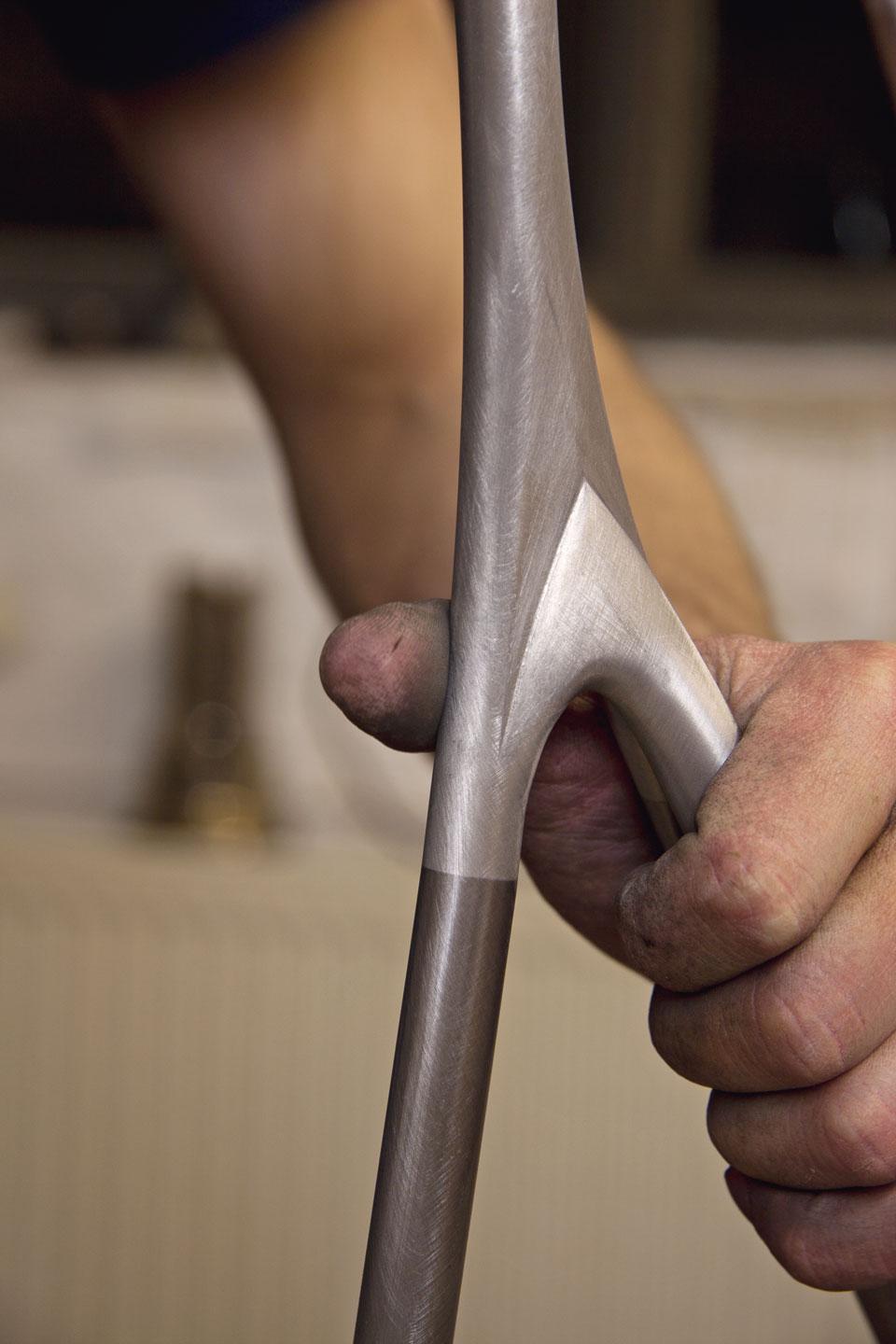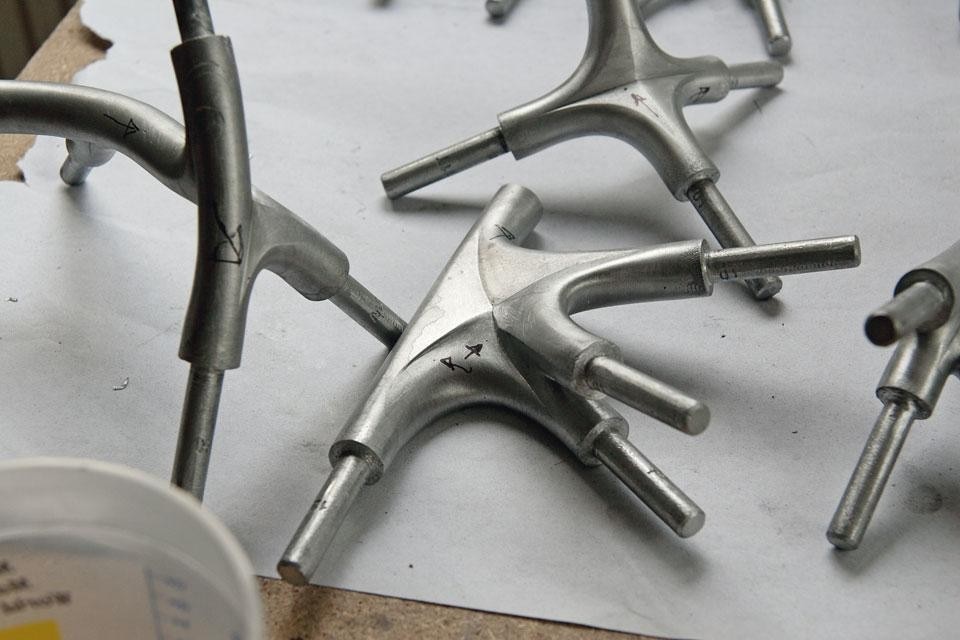Developed in collaboration with the Audi Leichtbauzentrum (Lightweight Design Centre) using techniques developed for racing-car manufacturing, the R18 Ultra Chair by Clemens Weisshaar and Reed Kram is an experiment in technology transfer from the research behind the Le Mans 2011-winning Audi R18 to the field of lightweight furniture.
The chair consists of three main components: a carbon-fibre seat, a carbon rubber sandwich backrest and aluminium alloy legs which can be compacted and transported in a lightweight flat¬pack box. This results in an 80 per cent decrease in shipping volume compared to the assembled chair. The R18 Ultra Chair Public Beta installation at Palazzo Clerici will open the testing process up to the public.
A prototype version of the chair, equipped with industrial sensors and connected to a central server, will crowd-source data on the chair's performance under intensive use. As visitors to Palazzo Clerici are invited to interact with the chair, the flow of forces normally hidden from the human eye is exposed and visualised; the purpose of this live laboratory is to gather user data to optimise the final product and shed every gram of excess weight. Every testing session will be documented as a personalised video and sent back to the visitor by email link to watch and share with friends—furniture fully integrated with social media.
The final version of the chair will be presented to the public in December 2012 at Design Miami.
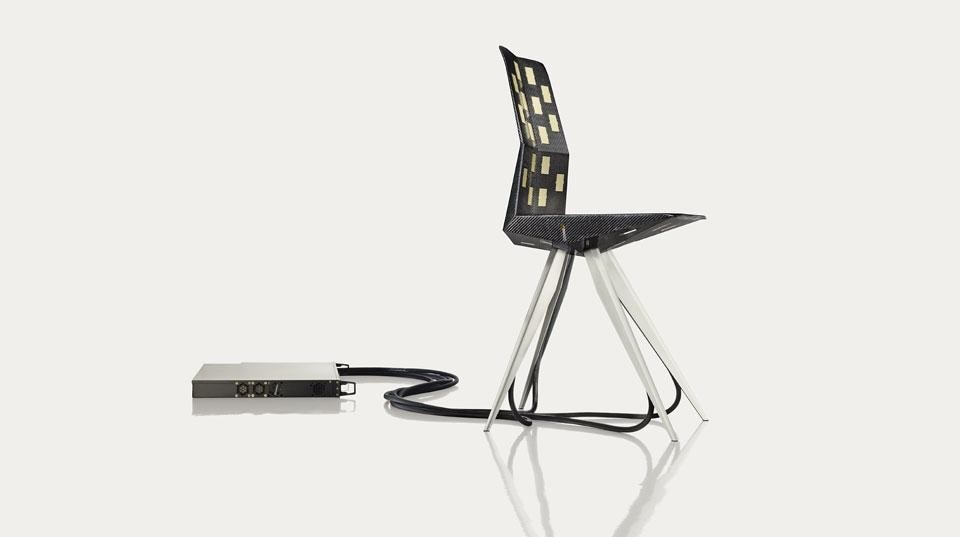
In this installation Weisshaar and Kram introduce a new design paradigm they describe as Force Driven Structures. The design process behind each piece of furniture begins with a set of horizontal surfaces positioned in space — a table top, a shelf, a desk and so on. A web of thin connecting bars is defined to support these surfaces. A software application created by the designers using the latest techniques of physics-simulation technology analyses and modifies the structure based on the forces passing through it, such that the final form and colour of each joint is a direct representation of the energy it supports. The software then outputs a complete set of digital blueprints that are handed to a team of master craftsmen who use computer controlled tools to fabricate the furniture. A cutting-edge system of evolving logic informs the entire fabrication process from the computer screen to the shipping crate.
Multithread will be exhibited during Milan's Salone by Nilufar Gallery in the context of a homonymous exhibition held in the Sala Pericoli of the gallery adjacent to the Gio Ponti-designed Palazzo Garzanti on Via della Spiga. As well as the product, the Multithread exhibition will display an array of rare 19th-and early-20th-century antique Chinese carpets alongside the first six pieces from a new series of unique furniture by Weisshaar and Kram. The exhibition will run from 16 to 22 April 2012.
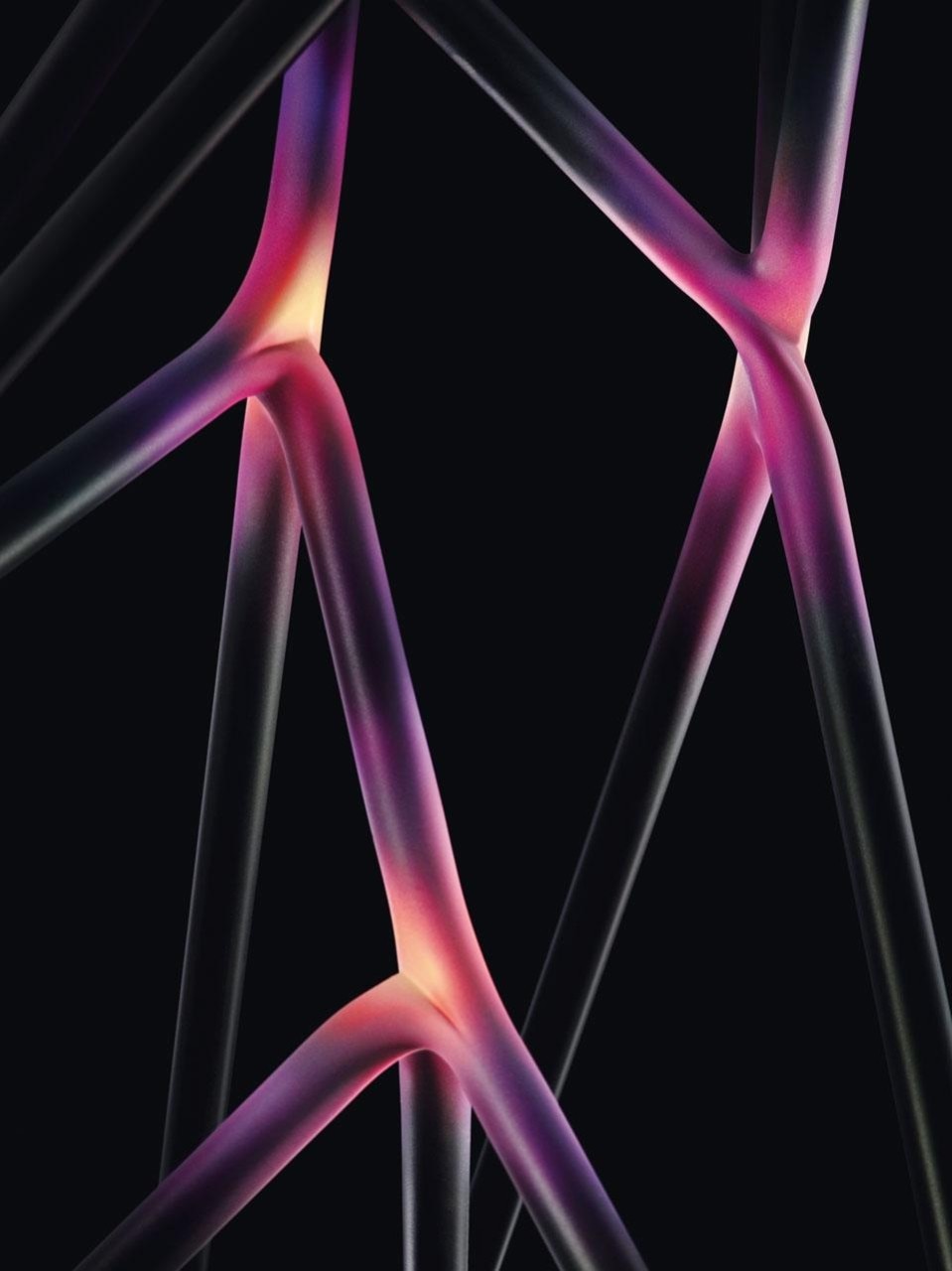
Designers: Clemens Weisshaar e Reed Kram con Christoph Weisshaar, Carles Tomás Martí, Víctor García Fernández, Michael Reiner e Thorsten Schröger
The Future in the Making
Palazzo Clerici
Via Clerici 5, Milan
17 to 22 April 2012
17 April 11:00 — 18:00
18 to 22 April 11:00 — 22:00
